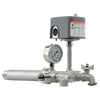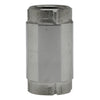Categories
- Shop All (5594)
-
-
- Hi-Vis Chainsaw Safety (14)
- Hi-Vis Coveralls and Overalls (25)
- Hi-Vis Hoodies and Shirts (49)
- Hi-Vis Jackets (35)
- Hi-Vis Pants (21)
- Hi-Vis Rain Wear (47)
- Hi-Vis Vests (51)
- Winter Hi-Vis Bombers and Parkas (26)
- Winter Hi-Vis Coveralls and Overalls (22)
- Winter Hi-Vis Hoodies (4)
- Winter Hi-Vis Pants (3)
- Winter Hi-Vis Vests (6)
-
- Bib Overalls (10)
- Bombers and Parkas (16)
- Coveralls and Overalls (18)
- Disposable Garments (12)
- Flannel and Plaid Work Shirts (20)
- Heated Work Wear (7)
- Hoodies and Sweaters (11)
- Industrial Rainwear (49)
- Pants and Shorts (60)
- Shirts and Sweaters (33)
- Thermal Underwear (36)
- Vests (17)
- Work Jackets (74)
-
-
-
-
- Brooms (2)
- Dust Mops (0)
- Dust Pans and Brushes (4)
- Flow Thru Tools (2)
- Microfiber Mops (0)
- Pool and Tank Tools (2)
- Scrubbers and Scrapers (1)
- Soap and Sanitizer Dispensers (0)
- Sprayers (1)
- Squeegees (1)
- Toilet Brushes and Plungers (3)
- Trash Cans & Bags (8)
- Wet Floor Signs (0)
- Wet Mops and Buckets (4)
-
- Bars and Prying Tools (21)
- Bolt Cutters and Shears (17)
- Chisels and Punches (9)
- Combination Hand Tool Sets (12)
- Extractors (13)
- Files (6)
- Gear Pullers (14)
- Hammers and Mallets (14)
- Hand Saws (22)
- Hex Keys (12)
- Layout and Distance Lasers (1)
- Marking Tools (1)
- Measuring Tools (26)
- Pliers (56)
- Precision Measuring and Testing Tools (24)
- Propane Torches (8)
- Screwdrivers and Nutdrivers (22)
- Sockets (66)
- Tap and Die Sets (11)
- Tool Boxes (27)
- Utility Knives (14)
- VDE Tools (7)
- Wire Cutters and Strippers (14)
- Wrenches (22)
-
- Beveling and Deburring (17)
- Curb and Valve Keys (20)
- Drilling and Tapping (12)
- Extended Impact Sockets (3)
- Flaring and Rerounding (7)
- General Pipe Working Tools (23)
- Guillotine Pipe Cutters (2)
- Hydrostatic Test Pumps (12)
- Internal Pipe Cutters (6)
- Manhole Testing (4)
- PE Peelers (8)
- Pipe Reamers (4)
- Pipe Threading (17)
- Pipe Wrenches (24)
- Plastic Pipe Joint Kits (4)
- Plastic Pipe Saws (5)
- Power Drive (13)
- Quick Release Cutters (15)
- Ratchet Shears (9)
- Ratcheting Wrenches (12)
- Rotary Cutters (3)
- Shut Off Tools (9)
- Soldering Torches (3)
- Vises (7)
-
- Angle Grinders (6)
- Batteries and Chargers (18)
- Bench Grinders (7)
- Circular Saws (3)
- Combo Tool Kits (10)
- Cordless Fans (6)
- Cordless Lighting (15)
- Cut Off Saws (4)
- Drills and Drivers (8)
- Grease Guns (3)
- Impact Drivers (5)
- Jobsite Radios and Speakers (8)
- Lifestyle (7)
- Mitre Saws (2)
- Reciprocating Saws (4)
-
- Angle Grinder Wheels and Brushes (23)
- Bench Grinder Wheels (7)
- Circular Saw Blades (11)
- Drill and Driver Bits (26)
- High Speed Gas Saw Blades (3)
- Holesaws (11)
- Impact Sockets (25)
- Jig Saw Blades (2)
- Oscillating Multi Tool Blades (1)
- Portable Chop Saw Blades (4)
- Power Tool Storage (5)
- Reciprocating Saw Blades (8)
-
-
-
-
- Air Fresheners (2)
- All Purpose Cleaners (19)
- Bowl and Washroom (8)
- Coffee and Breakroom (19)
- Degreasers (3)
- Dishwashing (4)
- Disinfectants and Sanitizers (1)
- Drain Openers (7)
- Hand Cleaners (10)
- Laundry Cleaners (10)
- Paper Products and Wiper Rags (24)
- Scale Removers (4)
- Urinal Pucks and Liquids (5)
- Wet Wipes (2)
-
-
- Ball Valves (13)
- Black and Galvanized Steel Fittings (16)
- Bronze Pipe Fittings and Nipples (13)
- Butterfly Valves (4)
- Check Valves (18)
- Flexible Connectors (4)
- Gate and Globe Valves (5)
- Knife Gate Valves (9)
- Pipe Fitting Accessories (4)
- Schedule 80 PVC Fittings (27)
- Stainless Steel Fittings and Valves (24)
- Victaulic Grooved Fittings (23)


Pressure Tanks
16 products
Showing 1 - 16 of 16 products






Understanding Pressure Tanks
Pressure tanks are essential components in plumbing, industrial, and agricultural systems, helping regulate pressure and ensure efficient fluid delivery. They work by using compressed air to exert force on stored liquids, maintaining pressure within a set range. This mechanism reduces the need for constant pump operation, stabilizes water flow, and keeps systems running smoothly.
What Are the Main Functions of Pressure Tanks?
Pressure tanks serve several essential functions across various applications:
Water Storage: They act as a reserve supply during periods of high demand, ensuring that water is readily available even when pumps are off.
Pressure Regulation: By keeping the system at a consistent pressure, they allow fixtures and appliances to function smoothly without fluctuations.
Pump Protection: They reduce the frequency of pump start-stop cycles, minimizing wear and tear and extending the pump’s lifespan.
What Types of Pressure Tanks Are Available?
Different pressure tanks are suited for different applications. Here are the most common types:
1. Well Pressure Tanks
Used in private water systems, especially in rural homes:
Diaphragm Tanks: Feature a rubber diaphragm separating air and water.
Bladder Tanks: Contain a replaceable rubber bladder to hold water, offering easy maintenance.
Air-over-Water Tanks: Older design without a separation barrier; more prone to air loss and waterlogging.
2. Water Heater Expansion Tanks
Installed in plumbing systems, these accommodate the expansion of water as it heats up—preventing excess pressure that could damage pipes or fixtures.
3. Industrial Pressure Tanks
These are used to store pressurized gases or chemicals in industries such as petrochemicals, pharmaceuticals, and food processing. They are engineered for durability and safety under high pressure.
Explore Pressure Tanks at Our Canadian Warehouse
Flexcon Well-Rite WR-120R 33 Gallon Pre-Charged Pressure Tank
The Flexcon Well-Rite WR-120R 33 Gallon Pre-Charged Pressure Tank was built with durable 16-gauge steel and a corrosion-resistant urethane finish. It features an internal butyl rubber bladder and an anti-microbial copolymer lower chamber for enhanced hygiene and longevity. Pre-charged to 38 psi (adjustable), it ensures efficient water pressure management with drawdown capacities of up to 13.3 gallons, depending on the switch setting.
Flexcon Well-Rite WR-60R 20 Gallon Pre-Charged Pressure Tank
The Flexcon Well-Rite WR-60R 20 Gallon Pre-Charged Pressure Tank features a butyl rubber bladder and an anti-microbial lower water chamber to ensure hygiene and durability. Pre-charged to 38 psi and rated up to 125 psi, it offers efficient water drawdown across various pressure switch settings. With a 1" NPT connection, NSF 61 certification, and a 5-year limited warranty, the WR-60R delivers reliable, long-lasting water pressure performance.
Flexcon Well-Rite WR-240R 81-Gallon Pressure Tank
The Flexcon Well-Rite WR-240R 81-Gallon Pressure Tank was built from durable 16-gauge steel with a corrosion-resistant urethane finish. It features a butyl rubber bladder and an anti-microbial lower chamber for enhanced hygiene and longevity. The tank includes a welded stainless steel connection for airtight seals, is pre-charged to 38 PSI for easy installation, and supports up to 125 PSI.
FAQs
1. How do I know if my pressure tank is waterlogged or failing?
Common signs of a waterlogged or failing pressure tank include rapid pump cycling (turning on and off frequently), low water pressure, fluctuating pressure, and unusual noises. You might also notice air sputtering from your faucets. These issues typically indicate a ruptured bladder or a loss of air charge inside the tank.
2. What’s the difference between a bladder tank and a diaphragm pressure tank?
Both bladder and diaphragm tanks separate water and air to maintain pressure, but the main difference lies in their internal construction. A bladder tank uses a balloon-like rubber bladder, while a diaphragm tank uses a fixed rubber diaphragm. Diaphragm tanks tend to be more durable and resist wear better over time, though both types serve the same function.
3. How do I check and adjust the air pressure in my pressure tank?
To check air pressure, first turn off the pump and drain the water from the tank. Use a tire pressure gauge to measure the air pressure at the tank’s Schrader valve (usually located on top). The pressure should typically be 2 PSI below your pump's cut-in pressure. If it's too low, use an air compressor to add air; if it's too high, release some air.
4. Can I use a pressure tank for rainwater harvesting systems?
Yes, pressure tanks are an excellent addition to rainwater harvesting systems because they provide consistent water pressure and reduce the frequency of pump starts. This is especially useful when using the collected rainwater for irrigation, toilets, or even household supply if filtered properly.
5. Why does my pressure tank keep losing pressure?
If your pressure tank keeps losing pressure, it could be due to a leaking bladder or diaphragm, a faulty air valve, or a slow leak in your plumbing system. In some cases, corrosion or a cracked tank could also be the culprit. Regular inspection and maintenance can help identify and fix these issues early.



























